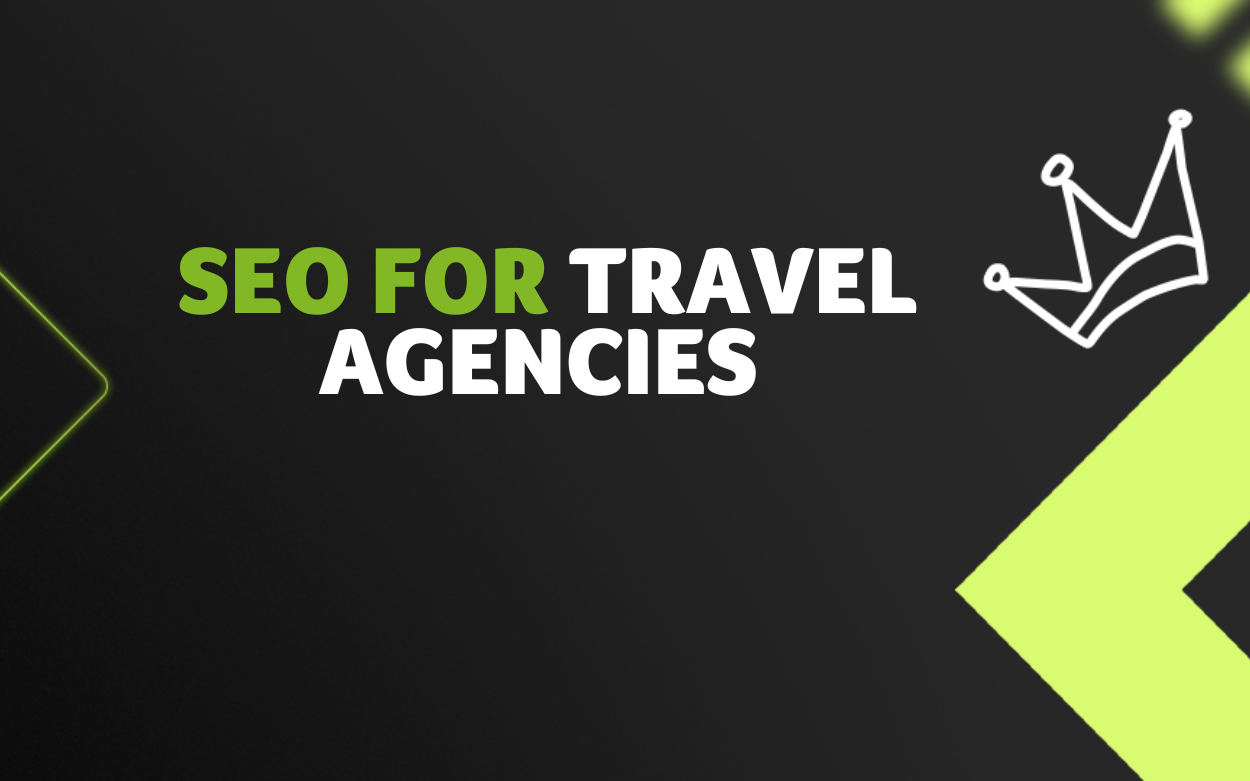
72% of travelers preferred booking their trips online. The numbers back this up: millions of people search for travel destinations, flight deals, and custom vacation packages each month.
For instance, the search term “travel agency” has 301K monthly searches, while the term “vacation packages” has 110K monthly searches.
Each search represents a potential traveler — a new client ready to book their dream trip. But here’s the challenge: competition is fierce.
Major travel companies and booking platforms like Expedia and Booking.com often dominate search results, making it harder for independent travel agents to stand out.
But don’t be discouraged — with the right SEO strategies and consistent effort, even smaller agencies and tour operators can claim their spot on the first page and attract valuable organic traffic.
This guide provides a comprehensive roadmap to SEO for travel agents, from mastering keyword research to creating engaging content and optimizing your website. By the end you’ll be equipped to connect with more clients and grow your business
What Is SEO For Travel Agencies?
SEO, or search engine optimization, makes travel websites more visible to potential clients searching online for trips, tours, or vacation packages.
It ensures your website appears in search results for queries like “best safari tours in Africa,” “luxury honeymoon destinations,” or “family-friendly vacation packages near me.”
By optimizing your website’s content, structure, and technical elements, you can improve its relevance to search engines like Google and increase your chances of reaching your target audience.
The higher your website ranks, the more likely travelers will click on your link, leading to increased traffic, inquiries, and bookings.
Consider this: 68% of all clicks go to the top three results on Google’s first page, leaving significantly less traffic for lower-ranked pages.
This makes a strong SEO strategy essential for travel agents who want to stand out in a competitive online space.
Why Is SEO for Travel Websites Important?
Why should travel agents invest time and resources into SEO? The answer is simple — the ROI is impressive.
Let’s talk numbers: the search term “airline tickets” gets around 188,000 monthly searches:
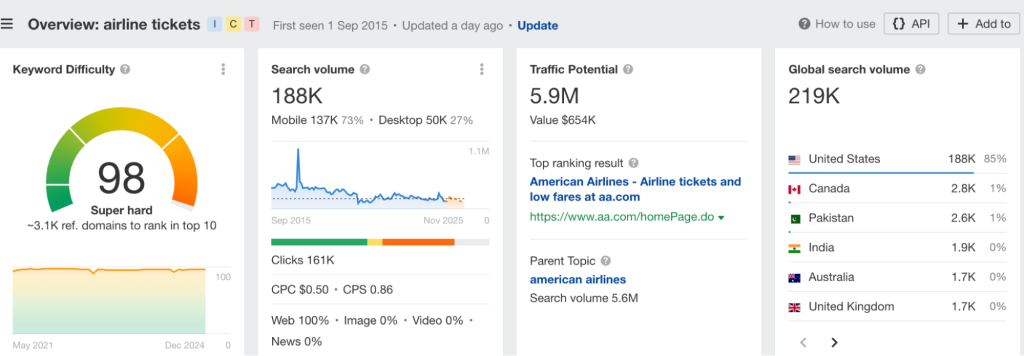
Source: Ahrefs
If you rank at the top and capture 30% of that traffic, you could see 56,400 monthly visitors. With a modest 2% conversion rate, that’s 1128 paying customers.
If the average cost of a vacation for a single person in the U.S. is $1,984, those clients could generate over 2.2 million dollars in monthly revenue.
The potential ROI is massive compared to an average monthly SEO cost of $3,209.
While broad keywords like “airline tickets” are competitive, smaller travel agencies can still succeed with SEO by:
✅ Focusing on long-tail keywords: Target specific phrases (like “luxury honeymoon packages in Bali” or “family-friendly safari tours in South Africa”) to attract highly relevant traffic.
✅ Localizing your efforts: Use location-based keywords (like “travel agents in Denver” or “best New York City tours”) to appear in local searches and connect with clients in your area.
Understanding how Google determines which websites to display in these local and niche searches is essential for maximizing your online visibility.
So, let’s dive deeper into how Google’s search works below.
How Does Google Work?
When someone searches for travel-related information, search engines use an algorithm to decide which websites to display in Google search results — and in what order. This algorithm considers hundreds of factors, but three key ones are:
🏆 Relevance: Does your website content match the search query? If someone searches for “luxury safari tours,” Google looks for pages with those exact terms or closely related ones.
🏆 Authority: Does your website seem trustworthy? Google favors websites with quality backlinks, meaning other reputable sites link to yours.
🏆 User experience: Is your site fast, mobile-friendly, and easy to navigate? Google prioritizes websites that offer a seamless experience for visitors.
Now that you understand how Google decides which websites to display, the question becomes: how can you make your travel agency’s website rank higher?
The answer lies in focusing on the core aspects of SEO. These are often referred to as the four pillars of SEO, and mastering them is key to boosting your website’s visibility and attracting more clients. Let’s explore each pillar in detail.
The Four Pillars of SEO for Travel Services
Content
Content is the foundation of your SEO strategy and the key to attracting and engaging potential customers. “Content” includes everything from website copy and blog posts to destination guides, travel tips, visuals, client testimonials, and interactive tools.
High-quality content helps your website rank higher by providing valuable information to users, establishing your agency as a trusted source of travel expertise, building brand awareness, and ultimately driving bookings.
On-page SEO
On-page SEO optimizes your website’s elements to improve search engine rankings and user experience. This includes crafting compelling title tags and meta descriptions, using headings effectively, optimizing image alt text, and ensuring your website is mobile-friendly.
These optimizations help search engines understand your website’s content and improve the user experience.
Technical SEO
Technical SEO focuses on the behind-the-scenes aspects of your website that affect search engine crawling and indexing.
This includes website speed, mobile-friendliness, site architecture, URL structure, and schema markup. A technically sound website allows search engines to access and understand your content easily to enhance online visibility.
Off-page SEO
Off-page SEO involves activities outside your website that influence your search engine rankings.
The most crucial aspect is link building, which means acquiring backlinks from other reputable websites.
These backlinks act as endorsements, signaling to search engines that your website is trustworthy and authoritative.
😵💫 Sound confusing? Don’t worry! Below, we will break down each of these pillars and show you how to implement them for your travel agency.
How to Get Started with Travel SEO
Know your niche
The first step in optimizing your travel website for search engines is defining your niche.
Instead of trying to appeal to every traveler, focus on the types of customers you’re best equipped to serve.
Whether it’s luxury safaris, adventure tours, budget-friendly family vacations, or destination weddings, the narrower your niche, the more effectively you can connect with the right audience.
For example, Remote Year focuses on people looking to travel while working remotely:
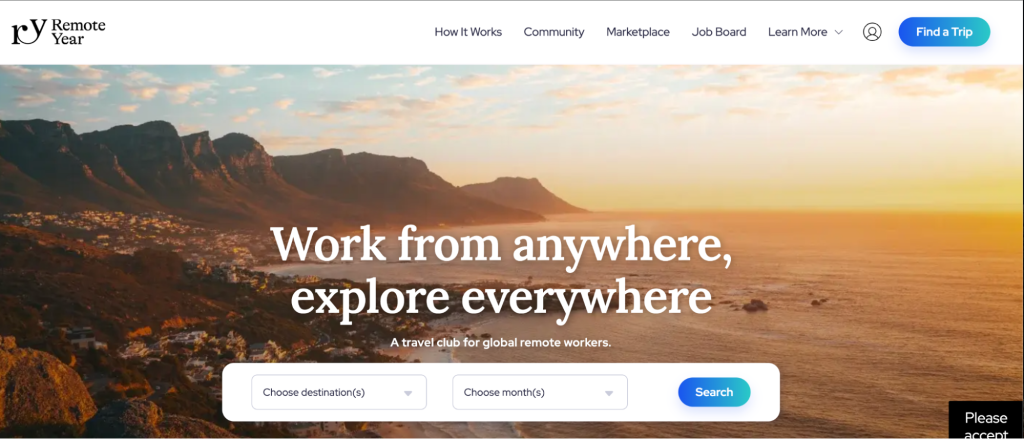
Source: Remote Year
Another example is Untamed Borders, which offers trips to some of the most dangerous places on earth, including Afghanistan, Iran, and even Somalia.
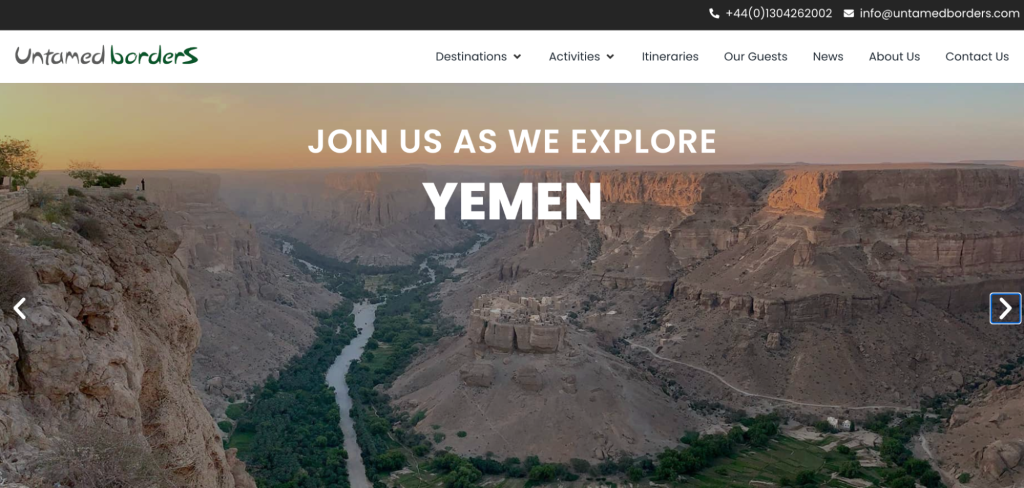
Source: Untamed Borders
Do keyword research
When it comes to getting your travel site noticed, keywords are the cornerstone of your SEO strategy. Keywords are specific words or phrases potential clients type into search engines when planning their trips or looking for travel services.
Think of keywords as the link between your potential clients’ searches and the content on your website. Using relevant keywords makes it easier for search engines like Google to connect users to your site.
For instance, someone searching for “luxury safari tours in Africa” or “affordable honeymoon packages in Bali” is far more likely to find your site if you’ve incorporated these phrases naturally into your content.
Next, we’ll walk you through how to find the most effective keywords using Ahrefs.
Log in to Ahrefs
The first step is to login to Ahrefs. If you don’t already have an account, you can create one here.
Navigate to Keyword Explorer
In the Ahrefs dashboard, select “Keyword Explorer” from the top menu. This tool allows you to explore keywords and find data like search volume and difficulty (how competitive a keyword is to rank for).
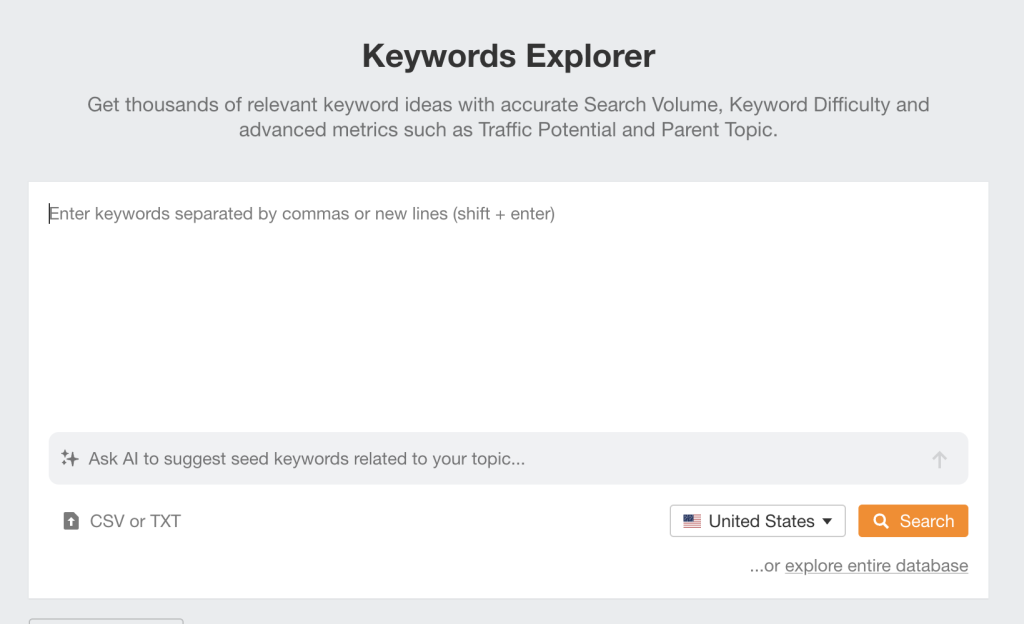
Source: Ahrefs
Enter keywords related to your travel niche
Start with broad keywords related to your travel agency’s niche. For example, if you specialize in family vacations to Europe, try keywords like:
- “family vacations Europe”
- “best family resorts Europe”
- “family travel packages”
- “family-friendly European destinations”
Hit “search,” and Ahrefs will reveal valuable data, including:
📊Search volume: How many times people search for this keyword each month. Higher volume means more potential travelers but also more competition.
📊Keyword difficulty: How hard it is to rank for this keyword. Lower difficulty means a better chance of reaching the top of search results.Below, we’ve used the keyword “family travel packages” to illustrate this:
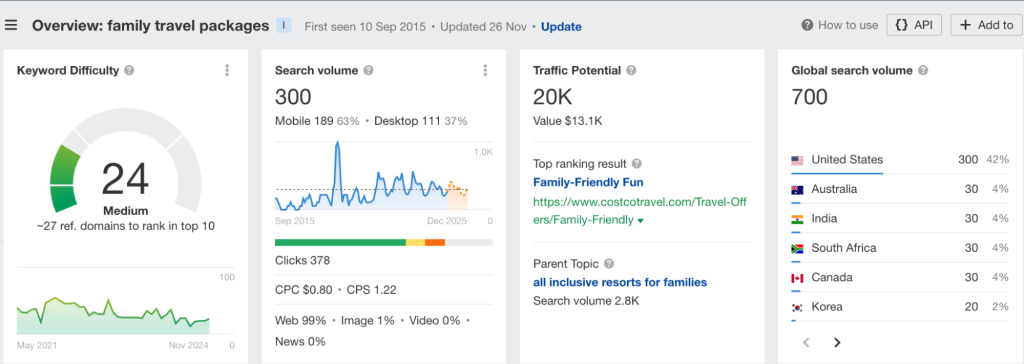
Source: Ahrefs
For example, our keyword “family travel packages” has a search volume of 300, with a traffic potential of 20,000 for the top result. It also has a keyword difficulty of 24, which means it’s relatively easy to rank for organically.
Analyze keyword suggestions
Ahrefs will also provide you with keyword suggestions for keywords related to your target keyword:

Source: Ahrefs
The goal is to look for long-tailed keywords with a balance of decent search volume (so people are searching for them) and lower difficulty scores (so you have a good chance of ranking).
Targeting less competitive keywords can help you rank faster, even if their search volume is a bit lower. As you can see above, there are quite a few good options, including:
- Family vacation travel packages (50)
- Cheap family travel packages (30)
- Costa Rica family travel packages (20)
| 💡 Key point: Why is the search volume so “low”?
The search volume for a keyword like “family travel packages,” with 300 searches might seem low compared to broader terms like “airplane tickets,” with over 500,000 searches, because it’s a high-intent keyword. While fewer people search for it, those who do are actively looking to book a family holiday, making them far more likely to convert into customers. High-intent keywords tend to have lower search volumes because they are more specific, but their value lies in attracting ready-to-book travelers, not just casual browsers. |
Analyze the SERPs
Next, conduct a mini competitor analysis by reviewing the top-ranking pages for your keyword.
This gives you valuable insights into what kind of content is performing well and what you need to do to compete:

Source: Ahrefs
Download keywords
Once you have selected a keyword in Ahrefs, you can export the list of matching terms. Under “keyword ideas,” click on “view all.”
This will take you to a detailed page with all related keywords. On the left-hand side, click “Export,” and choose to download the data in CSV format:
| 💡Pro-tip: Don’t have access to keyword research tools?
Don’t worry! To look for target keywords, you can use Google Keyword Planner. It’s a free tool that can help you with keyword research. |
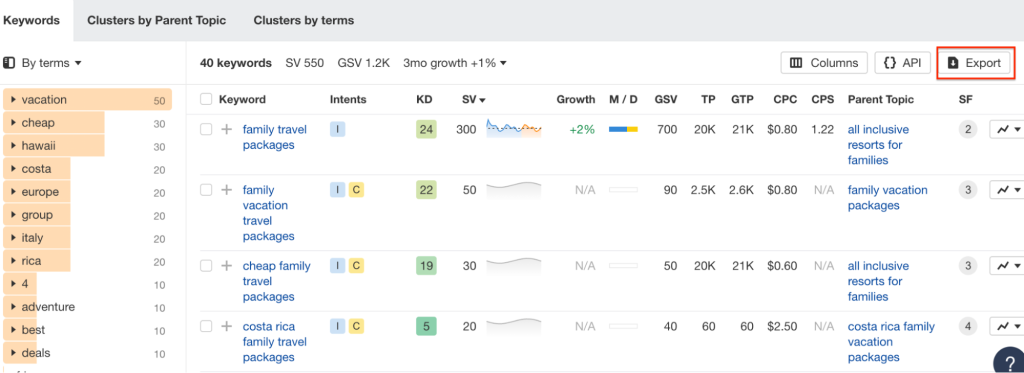
Source: Ahrefs
Where to use keywords on your web pages
Once you’ve chosen your keywords, it’s time to strategically place them on your site. Here’s where to focus:
✅ Page titles: Your page title should include your main keyword. This helps search engines understand your page’s focus:

Source: Google
✅ Headings (H1, H2): Use keywords in your main headings to signal relevance.
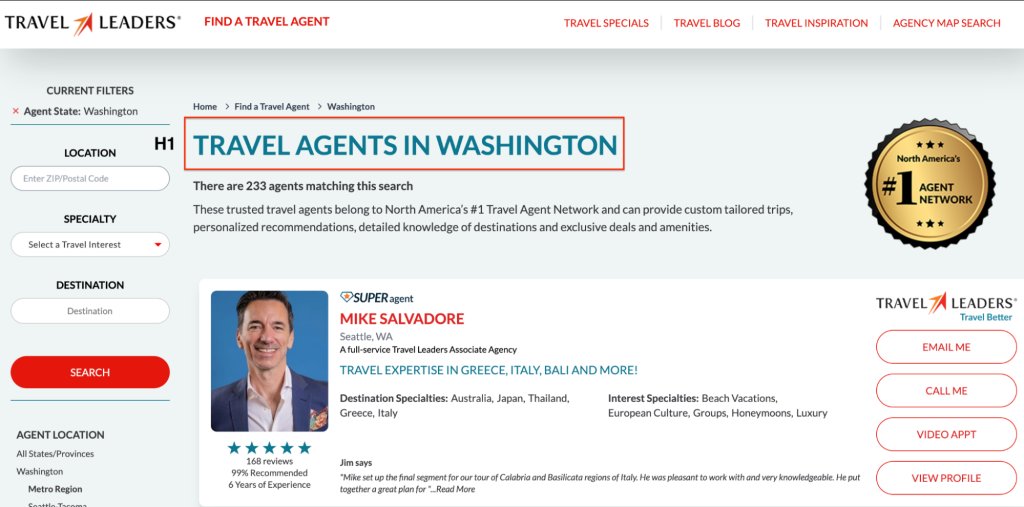
Source: Travel Leaders
✅ Content: Naturally include keywords within your content, but don’t overdo it. Aim for readability and flow while adding keywords where they make sense.
✅ Image alt text: Describe your images with keywords where relevant. This helps search engines understand what your images are about, adding to your overall SEO efforts.
Leverage local SEO
Travel agencies often cast a wider net to attract clients from various locations. However, establishing a strong local presence is still crucial, especially if you cater to travelers interested in your region.
Start by claiming and optimizing your Google Business Profile (GB). This free tool puts your agency on Google Maps and helps you appear in local search results.
A complete GB profile with photos, accurate information, and positive reviews can land you in the coveted “Local Pack” – the top section of Google search results showcasing local businesses:
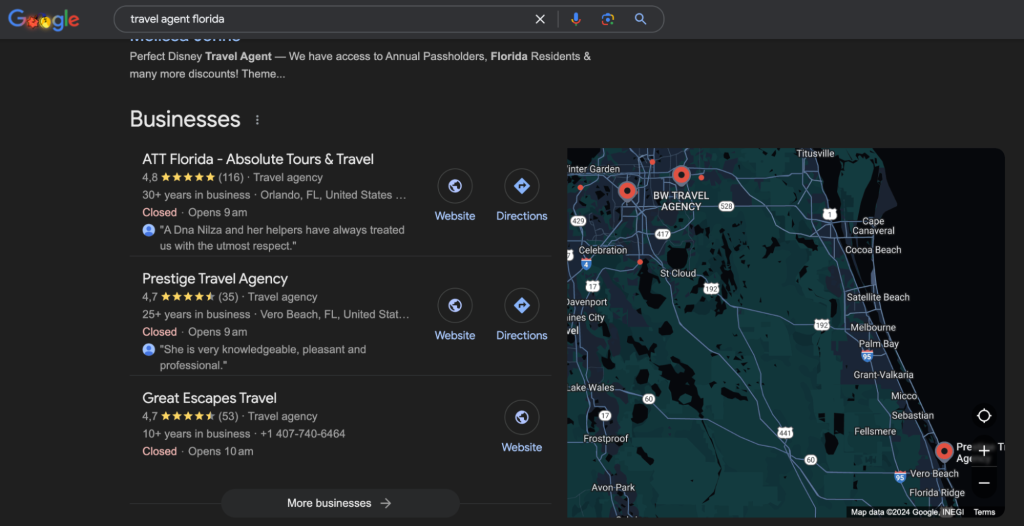
Source: Google
Here’s how to set up your free Google Business Profile:
- Sign in to your Google Account (or create one if you don’t have one).
- Go to Google Business Profile: You can find it by searching “Google Business Profile” on Google or going directly to business.google.com.
- Add or claim your business: If your travel agency is already listed, you can claim it and verify ownership. If it’s not listed, click on “Add your business” to start.
- Provide accurate and complete information: This includes your business name, address, phone number, website, business category (e.g., “Travel Agency”), service areas, and business hours.
- Verify your business: Google will typically verify your business by sending a postcard with a verification code to your address. Once you receive it, enter the code to complete the process.
Sign up for local directories
Beyond Google, expand your reach by creating profiles on travel-specific directories and platforms. Think of these as online brochures for your agency. Some key platforms to consider include:
➡️ TravelHUB
➡️ American Society of Travel Advisors (ASTA)
➡️ United States Tour Operators Association (USTOA)
| 💡Key point: Optimize Your Local Listings
Simply creating profiles isn’t enough. To maximize your SEO impact, optimize each listing with:
|
Optimize your images
Travel websites often feature many visuals of exotic destinations, luxurious accommodations, and unforgettable experiences.
While these images are essential for inspiring travelers and showcasing your offerings, they can also slow down your website if not properly optimized.
Image optimization is vital for maintaining a fast-loading site, which is crucial for user experience and SEO. A slow site can frustrate potential customers and negatively impact your search rankings, reducing your chances of attracting new clients.
Here are some quick tips to optimize your images for a travel website:
🌍 Resize and compress: Large image files can drastically slow down your site. Resize images to fit your web design layout and compress them to reduce file size without compromising quality. Tools like TinyPNG or JPEGmini can help.
🌍 Use descriptive file names: Rename files with keywords that reflect their content, such as “Maldives-beach-resort.jpg” instead of “IMG_1234.jpg.” This helps search engines understand your images and improve your rankings.
🌍 Add alt text: Write descriptive alt text for each image, incorporating relevant keywords like “sunset view from luxury Bali villa.” Alt text improves SEO and makes your site more accessible to users with screen readers.
🌍 Choose the right format: Use JPEG for photos to balance quality and file size, and PNG for graphics like logos or illustrations.
🌍 Enable lazy loading: Lazy loading ensures images only load when they’re about to appear on the screen, reducing initial load time and keeping your site fast.
On-page SEO
On-page SEO is all about fine-tuning your website to make it easy for search engines to understand and rank—and just as importantly, to provide a seamless experience for your visitors.
Here’s a checklist of key on-page elements to optimize for your travel site:
✅ Optimize title tags: Title tags are the clickable headlines in search results. Create clear, keyword-rich titles that reflect the page content. Keep them concise (50-60 characters) and engaging to encourage clicks and stand out from competitors.
✅ Write compelling meta descriptions: Meta descriptions are summaries that appear below the title tag. Craft informative, keyword-friendly descriptions that summarize the page’s content in 150-160 characters and entice users to click.
Here is an example of a search result for “travel agency Washington.” In the screenshot, 1 is the meta title, and 2 is the meta description.

Source: Google
✅ Use headings to structure content: Organize your content with headings (H1, H2, etc.) to make it more readable and to help search engines identify the key topics on the page. This also enhances the user experience, positively impacting your organic search results.
Build high-quality backlinks
Link building is an essential aspect of SEO that focuses on earning links from other websites to boost your site’s authority and rankings in search engines.
Think of links as “votes of confidence” from other sites that signal to search engines that your content is valuable and trustworthy. For travel agencies, building links from relevant, reputable websites can help you stand out in a competitive market and drive targeted traffic to your site.
| 💡Key point: What do you mean by a relevant, reputable website?
Relevant, reputable websites have a strong online presence that aligns with your industry. For travel agencies, this could include travel blogs, tourism boards, media outlets with travel sections, or niche sites focused on specific destinations or travel styles. A relevant website shares content that matches your services or audience, such as a blog about sustainable travel if your agency offers eco-friendly tours. A reputable website has high authority and trust, often demonstrated by a professional design, quality content, and strong domain metrics (e.g., Domain Authority or organic traffic). Sites like TripAdvisor and Airbnb are examples of the travel industry. Earning backlinks from these sites signals to search engines that your website is credible and worth ranking higher in search results. |
Below, we’ll explore some effective link-building strategies tailored to the travel industry:
Link outreach
Start by creating high-quality content that provides genuine value, such as destination guides, travel tips, or unique itineraries. Then, contact relevant websites, bloggers, or tourism boards to explain your content and why it would benefit their audience.
| 💡Pro tip: Personalize your outreach emails! Highlight how your content aligns with their site’s focus and why their readers would find it helpful. Avoid generic pitches—they’re less likely to get a response. |
Get featured on round-ups
Round-ups are popular with bloggers and travel writers. These lists are a great opportunity to get your site featured, especially if your agency specializes in a specific niche. For example, here is a round-up by the World Wildlife Fund on sustainable travel:
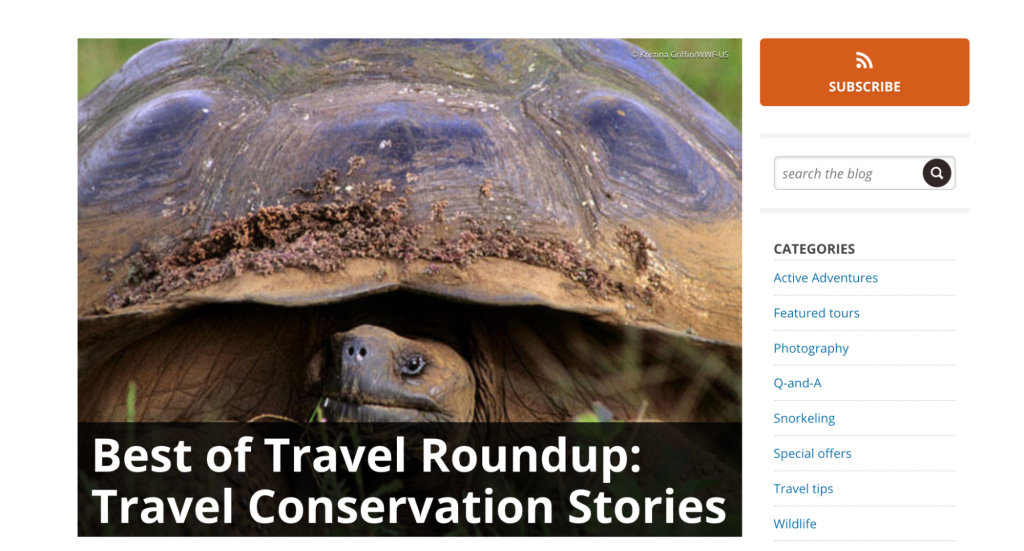
Source: WWF
💡 How to do it: Contact bloggers or writers in your niche and suggest your services or content for their next round-up. Make sure you provide detailed, engaging information to make their job easier.
PR backlinks
Many media outlets, such as The Guardian (DR 93) or National Geographic (DR 91), have dedicated travel sections that feature articles on destinations, trends, and tips.
Securing a mention or link in these publications can significantly boost your website’s authority and visibility.
ℹ️ Example: This article from The Guardian about interrailing in Europe includes a backlink to a travel company:
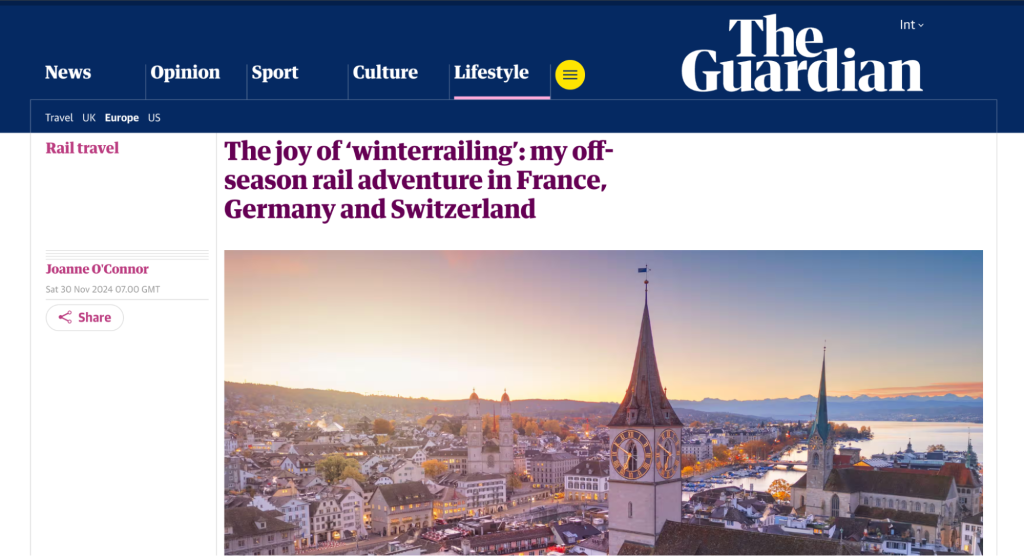
Source: Guardian
Guest posting
Guest posting is writing articles or blog posts for high-authority blogs within your industry or niche.
Identify relevant websites with a strong audience, pitch them your article ideas, and include a link to your website within the content or author bio.
ℹ️ Example: A yacht company contributed an article about island hopping in Greece to this blog.
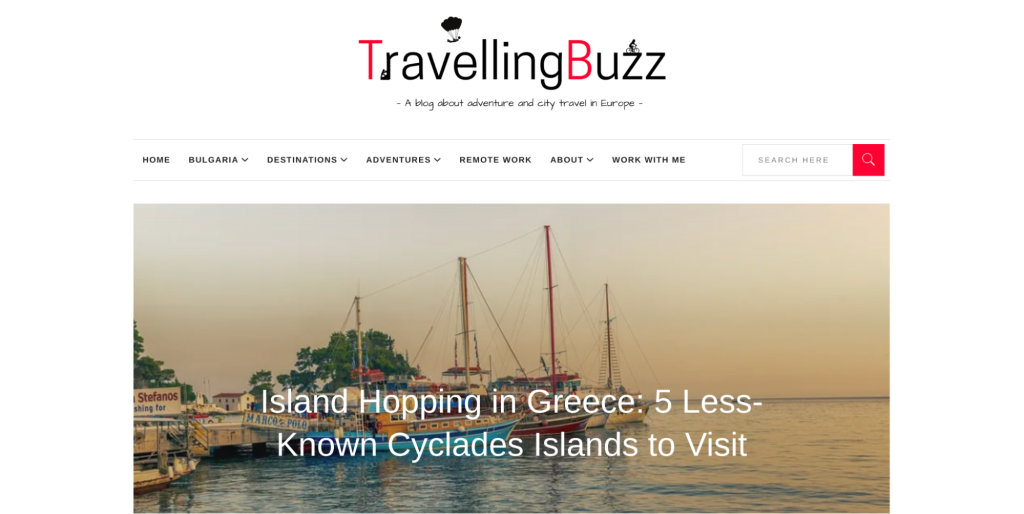
Source: TravellingBuzz
Broken link building
This technique involves finding broken links on travel-related websites and suggesting your content as a replacement. This is a win-win scenario:
✔️ For the website owner: They get to fix broken links on their site, improving user experience.
✔️ For you: You gain a valuable backlink from a relevant source.
Here’s how to use Ahrefs for broken link building:
Start by identifying websites in your niche or industry that have high authority. For the purposes of this example, we’re going to use Trip Advisor
Next, enter the Trip Advisor domain in Ahrefs’ “Site Explorer”:

Source: Ahrefs
Navigate to “Outgoing links” and then to “Broken links.” This will show you a list of broken outbound links on that site.
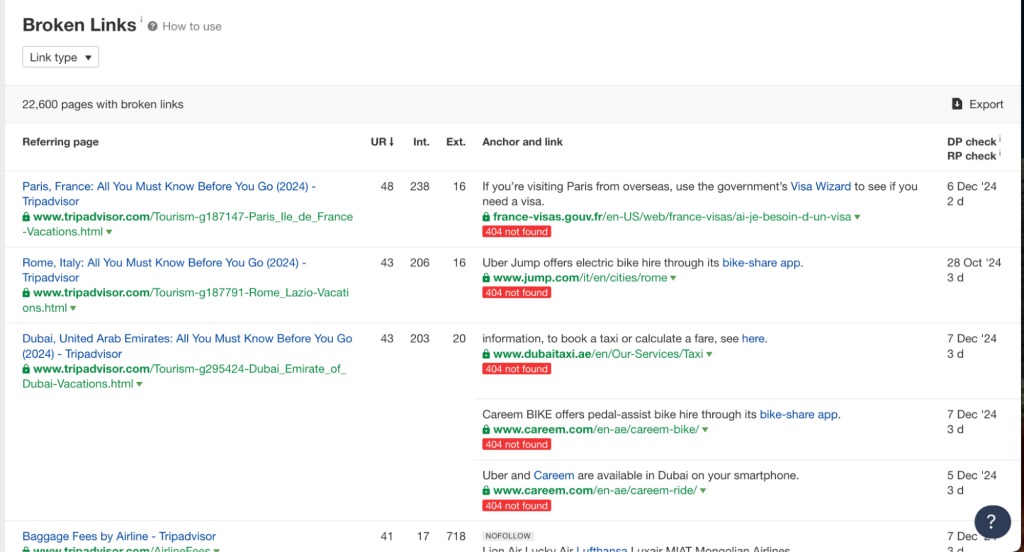
Source: Ahrefs
Review the list of broken links to identify relevant ones. Look for broken links pointing to content similar to what you offer.
If you already have content that can replace the broken link, ensure it’s high-quality and relevant. If not, create new content that matches or surpasses the quality of the original content.
Don’t overlook link insertions as a tactic: placing your link into an existing travel-related article can provide a quick, authoritative backlink to your site.
Wrapping Up: SEO for Travel Agencies
Mastering SEO doesn’t have to be overwhelming—especially for travel agencies. With these practical strategies, you can improve your website’s visibility, connect with more travelers, and grow your bookings.
From optimizing your site for keywords to building quality backlinks and enhancing technical elements, each step brings you closer to reaching your target audience and establishing your agency as a trusted expert in your niche.
Need SEO support for your travel business?
Navigating the competitive world of online travel can be challenging, but we specialize in helping travel professionals like you stand out. Our services include:
👑 Link Building – Earn quality backlinks to improve your site’s visibility
👑 Guest Posting – Share your expertise on top photography and lifestyle blogs
👑 Digital PR – Get featured in online publications to boost your brand credibility
👑 Citation Building – Strengthen your local SEO so clients in your area can find you
Ready to increase your visibility and connect with new clients? Sign up today, and let’s build a powerful SEO foundation for your travel business!
